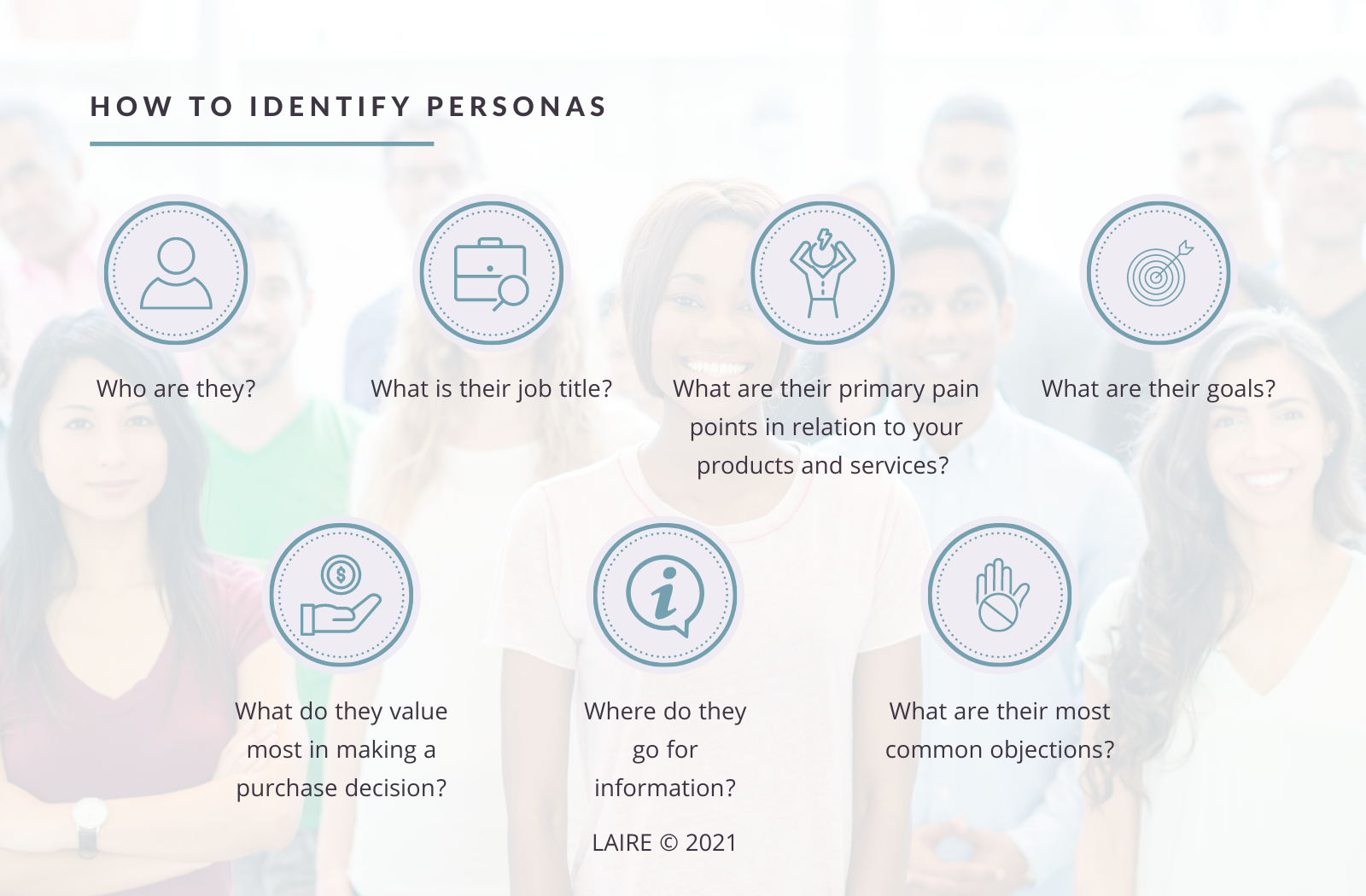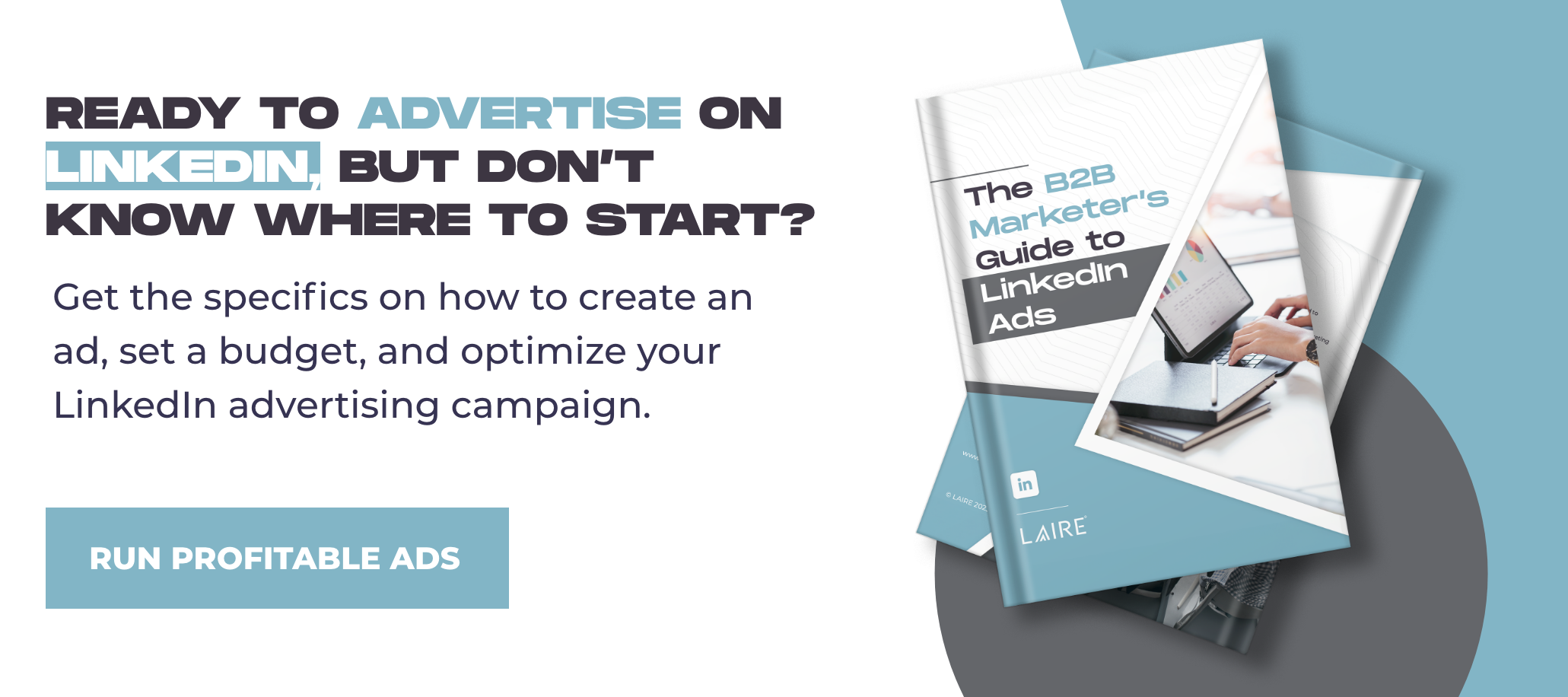With over 756 million members, LinkedIn is undoubtedly the world’s largest professional social media network. Having a LinkedIn profile enables you to tap into this rapidly growing community and showcase your own experience, skills, and education. You can use LinkedIn to find and apply for a new job, communicate with other professionals, take educational courses, organize events, join groups, write articles, share photos or videos, and more. Data-driven marketers can also use this powerhouse social platform as a source for valuable insights about people, audiences, and industries to enhance their content marketing efforts.
At its core, the key to successful content marketing is to first truly understand your target personas. You want to speak directly to them at the right time, with the right information that they will find valuable. To take it a step further, this means understanding their goals, needs, challenges, pain points, habits, likes, and dislikes to craft specific content. It is an extensive process but will be extremely fruitful for your long-term strategy. It is possible to build your marketing personas based on real data that can be found on LinkedIn. Before we jump into how you can use LinkedIn to provide a direct line of sight into your buyer personas, we should take a step back to unpack the ‘what’.
What is a Buyer Persona?
The terms buyer persona, marketing persona, and target persona can be used interchangeably being that the meaning of each is the same. A persona is a fictitious representation of your ideal customer based on research and data about your existing and potential customers. Typically, a business should have more than one persona at any given time to represent various segments of your service offerings or customer base. Buyer personas can change over time and should be reviewed for accuracy quite frequently. All in all, buyer personas will help you keep your messaging focused on addressing customer needs and pain points through your content, instead of pushing your own agenda.
How to Identify Personas
To find your buyer personas on LinkedIn, it’s important that you first know who your personas are. If you don’t yet have personas to inform your content marketing strategy, it’s time to make that a priority. To get started, take an inventory of your current customers. By looking at the people you currently work with, you should begin seeing patterns that you can use as the basic structure for your target personas. A few key questions you can ask yourself are:

- Who are they? (Gender, age, education)
- What is their job title? (Title, company size, industry, job responsibilities)
- What are their primary pain points in relation to your products and services?
- What are their goals?
- What do they value most in making a purchase decision? (Price, support, etc.)
- Where do they go for information? (News, publications, social media, etc.)
- What are their most common objections? (Reasons why your solutions won’t meet their needs)
Use these questions to create a detailed persona outline. This data will serve as a launching pad - so don’t stop there. You can also build a picture of the ideal prospect by looking at the people that you want to work with but haven’t yet secured as customers. Do they have any commonalities? Write this information down and see if you can identify a new persona based on this person as well.
You can give this persona a fake name, such as ‘Manager Mary’, ‘CEO Chris’, or ‘Business Owner Owen’. Take it a step further and use a stock image to assign to their profile to help you start to visualize this individual. Aim to have at least three personas by the end of this exercise. It’s simple, but do make sure you devote the proper amount of time to this process. Taken seriously, the personas you create can reap many benefits for your business growth.
Using LinkedIn to Conduct Market Research
Now that you have your personas outlined, you should be able to quickly find, research, and engage your marketing personas by leveraging LinkedIn. The most powerful tool that you’ll use in the platform as you conduct your research will be the search function and filters. This is the quickest path to learning more about your target audiences and digging deeper into their habits, needs, and attributes. Keep in mind that there is no right or wrong way to do this, and no special order that you must follow. You may choose to start by looking at a company, or you will begin with an individual profile. Either way, you’re going to be tapping into a gold mine of real data to help you make informed decisions about content efforts moving forward.
LinkedIn Profile Page Insights
Landing on a LinkedIn profile can show you data at an aggregate level: who they are, where they’re from, what they do, and what they engage with. If you decide to start your research by looking at individual profiles, there are several things that you should pay attention to in order to strengthen your market personas. Here are a few things to look out for:
- Job Title
- Location
- Bio/About
- Description of Their Current Role
- Past Experience
- Licenses
- Certifications
- Associations/Organizations/Groups
- Skills
- Interests
- Activity (Content that the individual recently posted or engaged with)
- Keywords (What words are they using in their summary and skills sections?)
There’s a lot to learn. Identify 10 to 15 accounts and jot down any profile information that you find of interest. Are you seeing any patterns among these individuals yet?
LinkedIn Company Page Insights
From the company side of things, there is also valuable information to be learned as there are more than 57 million companies on LinkedIn. The insights may be more high-level but can be beneficial to make a more comprehensive case for your personas. Here are a few things to keep an eye on from this angle:
- Industry
- Size of Company (Includes number of employees and revenue)
- Headquarters Location
- Website
- Bio/About
- Type (Public or private)
- Company Specialities
- Job Openings
- Activity (Content that the company recently posted or engaged with)
- Content Engagement (How do others engage with their posts?)
If you primarily serve the same industry, are there commonalities between the companies you’ve assessed? If you serve multiple industries, what similarities are you picking up on that will better inform the development of your marketing strategy?
Content for Each Stage of the Buyer’s Journey
This is where the rubber meets the road; where it all comes together and begins to make sense. You’ve spent time outlining at least three detailed persona characters and have conducted research using LinkedIn to help solidify more granular characteristics. What’s next? It’s time to place your buyer personas within the context of the buyer’s journey. If you want to create the right marketing content to reach your customers, it’s crucial to develop a thorough understanding of their journey as a buyer. In each phase, the content should look different to best reflect the buyer’s intent. The buyer’s journey consists of three phases:

- Awareness - Your buyer is experiencing some kind of pain point and realizes they need to alleviate it. In the awareness phase, you may create blog posts, videos, infographics, or eBooks that help to inform or answer any simple, beginning stage questions that your buyer may have. You want to show value, without being too ‘sales-y’.
- Consideration - The buyer has defined their problem and is now looking for methods that provide a clear solution. In the consideration phase, your content should be more explanatory in nature and provide options that will help solve the buyer’s problem or pain point. Checklists, calculators, white papers, case studies, and webinars work well in this stage.
- Decision - The buyer has decided what will be the best approach to solving the original problem and will be making a final decision or purchase. In the decision phase, your content should be very direct and provide valuable offers that encourage them to choose your solution as the best solution on the market. Product spec sheets, competitor comparisons, fact sheets, guides, and demos can give your buyer the last bit of information they need to become your customer.
Persona Example
To help you see how all of this can come together, we’d like to introduce you to Marketing Molly, one of LAIRE’s primary buyer personas. Molly is a Marketing Manager with a background in and passion for marketing. She is the point of contact that the Business Owner or CEO trusts in implementing successful marketing efforts for the company. Often, she is juggling many tasks like managing marketing automation, a CRM system, posting to social media, paid ads, copywriting, and more. She finds herself pulled in directions at times that don't have anything primarily to do with marketing. Here are some identifying points that are helpful to note about our Molly:
- Industries: Financial Services, Manufacturing, SaaS, Construction
- Roles: Mid-level manager to VP-level marketing position
- Demographics: Female, 25-35 years old
- Background: Full-time career, works independently or with 1 other person in marketing, trusted marketing contact, always trying to find new ways to increase leads, open communicator who is continually updating the Business Owner or CEO about marketing KPIs (key performance indicators), enjoys being involved in the overall marketing plan and strategy but also has daily tasks to manage
- Identifiers: Engages with HubSpot User Group, American Marketing Association, or other related professional societies, actively uses LinkedIn for networking and reading or sharing relevant articles, shares company social posts through a personal account
- Challenges: No budget or capacity to scale the business alone, needs a specialist to help with tasks not in her area of expertise, craves outside perspective to brainstorm with on meeting company growth goals, has a hard time with sales team alignment
Having this information helps us to create content that speaks directly to Molly and her pain points in hopes of earning her trust, nurturing her as a qualified lead, and converting her to a satisfied customer.
Conclusion
Marketers must do the up-front work to figure out the nitty-gritty details that make up a buyer persona. However, it can’t end there. The goal is to ultimately figure out what problems those personas are experiencing, and with the use of strategic content marketing efforts, position your business or organization as the trustworthy source that can solve those problems successfully. Using LinkedIn is just one way to help you get more granular with the details during the creation of your target personas.
LAIRE is a digital marketing agency for those in the B2B space, specializing in content marketing. We understand that it’s no easy task to craft buyer personas and their journeys. That’s why we created this guide, called ‘A Beginner’s Guide to Applying Content Marketing to Your Business’. To download this free offer and get started today, use the link below.


